I picked one of these up on a recent trip to Japan (for some reason, none were available locally). Though Japan is one of the few places where the larger stores have virtually all models of camera on demo/display, with batteries and storage and lenses and in essence ready to play with to your heart’s content – that tells you very little about how something will perform in the field, in practice. Motivations? I was seduced on impulse by the spec sheet.
Disclosure note: I currently work for Hasselblad as Chief of Strategy, which means I cannot objectively comment on or review anything that might be competition. But since we don’t make a consumer level APS-C compact, there’s little conflict of interest here: I too am simply looking for the perfect pocket tool as much as the next photographer. As small as the X1D is – for medium format – it’s not exactly pocketable.
The Canon G1X Mark III in ready-to-go configuration is probably the smallest complete APSC camera I can think of that has anything other than a fixed lens. The Ricoh GR series and Fuji X70 are smaller, but somewhat more limited (or not really, as it turns out). It has a 24MP hybrid sensor with PDAF photosites covering most of its surface area capable of shooting at 9fps with AE and AF locked, or 7fps with tracking – plus a stabilized 24-70/2.8-5.6 equivalent lens. There’s a tilt/swivel touch LCD and a 2.36m-dot EVF.
The body is solidly built and purportedly weather sealed, has comfortable ergonomics, and many customizable control points including three dials, a shortcut menu, and several buttons. There’s a physical mode dial and dedicated exposure compensation dial, plus the LCD can be used as an AF point trackpad when using the EVF. It has both a flash and a hotshoe, wifi, and a leaf shutter for full sync at all speeds – plus an electronic shutter that takes over when you need even higher speeds. The lens has a built in ND filter. In short: Canon has ticked almost every single box on the spec sheet other than 4K video – and simultaneously made it possible.
I think it’s easy to see why any photographer would be tempted: several years ago, we would have killed for something like this in the arsenal (or pocket). I’m reminded that I did plenty of work I liked with the original and even more limited Sony RX100 and Olympus E-M5 with Panasonic 14-42 power zoom pancake. But somehow…the little Canon didn’t really do it for me. I strongly suspect it’s a case of ‘it’s me, not you, Jane’ – let me explain why.
In all fairness, I should really start with the good bits – of which there are many. The sensor, when used within limitations and exposed properly, is pretty much state of the art for APSC – it’s every bit as good as the other 24MP APSC DSLR competition. This is to say at base ISO, there’s a lot of usable dynamic range (perhaps 13-13.5 stops or so) and a decent amount of recoverability, but this drops off pretty quickly above base. If care is taken with exposure, even the upper sensitive can be decent. However, one has to be careful though as the previews and LCD are not really representative of information in the file, even with JPEG parameter adjustment, the meter seems to be a little conservative most – but not all – of the time (perhaps biased towards JPEG output) – and there’s no live overexposure warning. The sensor doesn’t feel ISO-invariant – there’s definitely some penalty for underexposing and pushing afterwards, too. Noise also seems to be very sensitive to color temperature and overall luminance level: for ambient daylight 5000-6000K, you can shoot even at 6400 without too much worry. But in strongly shifted light (say LED or fluor at night) – you might even start to find 1250 objectionable. There’s also fine banding visible in pushed shadows, even at base ISO.
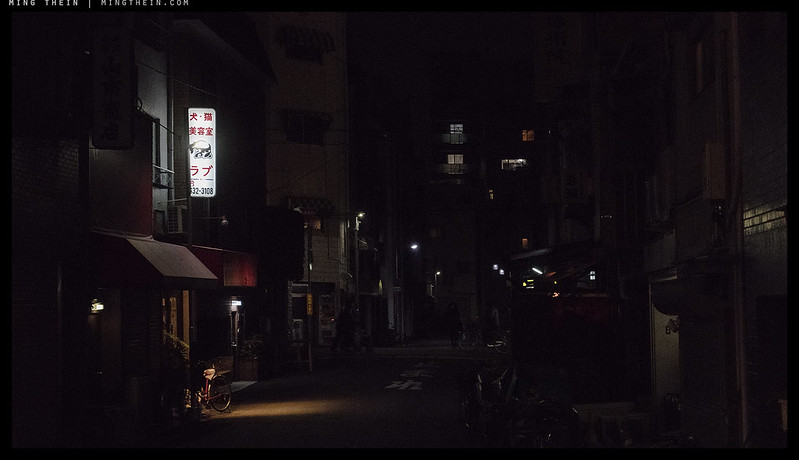 //embedr.flickr.com/assets/client-code.js
//embedr.flickr.com/assets/client-code.js
At 100%, the whole image is a mushy mess – and only at ISO 2500.
I think the two most impressive aspects of the camera are what I think of as acquisition and capture speed: AF is really lightning fast and very accurate thanks to PDAF; probably the fastest I’ve yet used (and that includes the Olympus E-M1 Mark II, and a brief experience with the Panasonic G9, reviewed here recently by Robin. It will track moving objects quite well, too – with much more certainty and accuracy than you’d expect from a camera of this type. LCD lag is minimal, though sometimes the exposure appears to take some time to ‘catch up’ if moving between scenes of vastly different brightness. Burst speed – at up to 9fps at full quality – is really fast, as is write and playback.
So it’s all the more frustrating when I have to say that overall, this is a very slow camera in practical use. Problem one: there’s a small and fiddly lens cap that must be removed, and unlike a larger camera that goes around your neck or over your shoulder, you put this one back on between shots since it goes into your pocket. Problem two: lens extension time is okay, but not fast – about 2-3 seconds. Problem three: zooming time is slow, taking a good couple of seconds more to go the short distance from wide to tele. Problem four: because this is a very small camera body, you have to shift your hands around quite a lot to access the various controls festooned over the body – case in point: there’s a button on the grip under your palm. The camera also lands up being gripped in a very cramped way unless you’re shooting landscape, though the information in the EVF rotates 90deg which is a nice touch (and inexcusable for every other EVF camera not to do).
All in all – in a practical usage scenario – camera carried as you normally would, powered off, you see something and want to grab it – shot acquisition time from power off to capture is slower than a cold booted X1D. I’d put it at somewhere around ten seconds, which is nowhere near something like a GR or X1D in hot standby at perhaps three to four seconds, let alone a D850 at about a second or two. I think this is barely excusable for medium format, let alone something that’s meant to be a convenient quick-grab snapshot camera.
Of course, if you have camera in hand and lens cap off – then we can probably halve that. ‘Setup’ time is the tradeoff for pocketability – and I’m not sure it’s a good one in this case, especially given there are alternatives that have both bigger envelope and are faster on the draw. However: this is where I get to the ‘it’s me, not you’ part: if you are fully focused on photography as the purpose of your outing, and want the best balance between size and performance but time is not so critical – say for landscapes on a hike, or some social photography you do in good light at a casual pace – this thing is pretty unbeatable. I can’t think of any current camera with higher performance per gram.
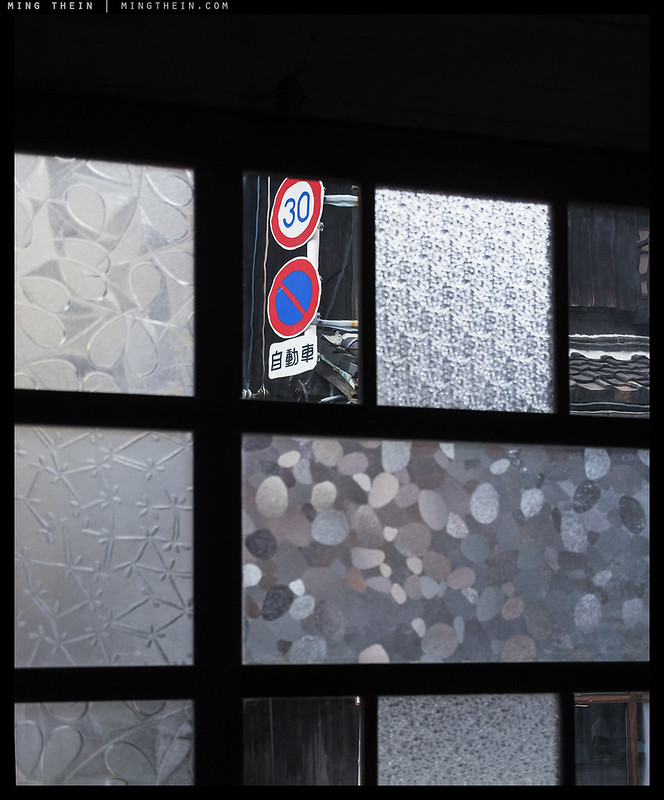 //embedr.flickr.com/assets/client-code.js
//embedr.flickr.com/assets/client-code.js
There are of course a few other things I’d list as sensible compromises for something this small – the battery is microscopic, but somehow manages to be much, much better than expected. I could happily go a whole day of casual secondary photography (easily 400-500 images, short 2-3 frame bursts and a lot of power cycling between them) on a single charge. You’d definitely want a spare if you had it on continuously, though it can be topped up via MicroUSB on the go, in addition to the separate charger.
The lens is impressive for its size and sensible tradeoffs – a good performer in the center throughout the range, less so in the corners due to fairly strong field curvature (but can still be sharp if off-center focusing points are used). It could use a bit more microcontrast and overall ‘pop’ though – this isn’t the best zoom I’ve used, though it isn’t the worst, and is probably the most compact. By far a more limiting factor is the slowness with which it zooms (using different motors, focusing is very fast), and IS doesn’t seem as effective somehow. I suspect this has something to do with the physical size of the lens elements required for APSC vs a smaller sensor, and the limited size in which to place the IS actuators. It’s certainly not as effective as the IS on its G7X Mark II sibling.
Herein lies the problem: I think I simply bought the wrong camera for my needs. What I see as annoyances – mainly relating to quick grab speed – aren’t a problem if you’re not planning to use it in the way I am for a sort of social documentary or by-the-way opportunistic shots. Its G7X Mark II sibling might have well been a better choice: its lens is between 1.3 and 2 stops faster throughout the entire zoom range, has longer (100mm vs 70mm) reach at the long end, which is where I tend to spend most of my time these days, and on top of that, the G1X Mark III is already down to f3.2 at just 28mm. The G7X II starts faster and has an automatically retracting lens cover. The sensor may be 1”, but by the time you factor in more effective IS and the much greater lens speed – I suspect it’s a wash in practice.
Why not one of the other 1” options, like a newer model of RX100? Because the sensor hasn’t really improved in a meaningful way in four years; because I owned the Mark III, and frankly found it to be too small and fiddly and simply not very enjoyable to shoot – and what I really looked forward to in the pull-up EVF turned out to be pretty much unusable in practice especially for spectacle wearers (there’s no eyecup or shading in bright light, where you’d need it most). This may be the real problem with small EVF cameras: if the body is too small, your thumb lands up in your nose and your hands are cramped, materially negating the added stability you should get from bracing the camera against your face. And it’s even worse if it’s cold and you’ve got gloves on (I’d say the Ricoh GR is the exception here are the controls are large and distinctive enough to be operated with normal leather gloves).
Effectively, what we have in the G1X III is an immensely capable camera – but thanks to the care required to deploy it well, you have to treat it a lot more seriously than you’d think, at which point you probably want to be carrying something a little more serious and/or ergonomically comfortable. It doesn’t really fill the spontaneous opportunistic brief well: it’s simply too slow to set up the shot for that, and the slow lens speed on the long end limits usefulness in low light. What it really is, is the best deliberate camera for those on a severe weight diet; what I think would really change the game is the same everything except for a fast stabilized fixed prime – say a 28/2 equivalent – and please, with a retracting lens cover…MT
The Canon G1X Mark III is available here from B&H and Amazon
The Canon G7X Mark II is available here from B&H and Amazon
__________________
Ultraprints from this series are available on request here
__________________
Visit the Teaching Store to up your photographic game – including workshop videos, and the individual Email School of Photography. You can also support the site by purchasing from B&H and Amazon – thanks!
We are also on Facebook and there is a curated reader Flickr pool.
Images and content copyright Ming Thein | mingthein.com 2012 onwards unless otherwise stated. All rights reserved

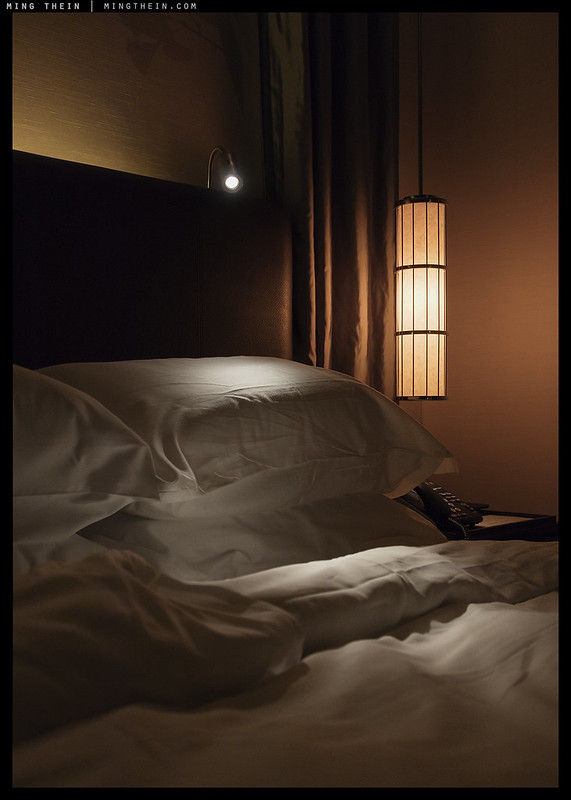
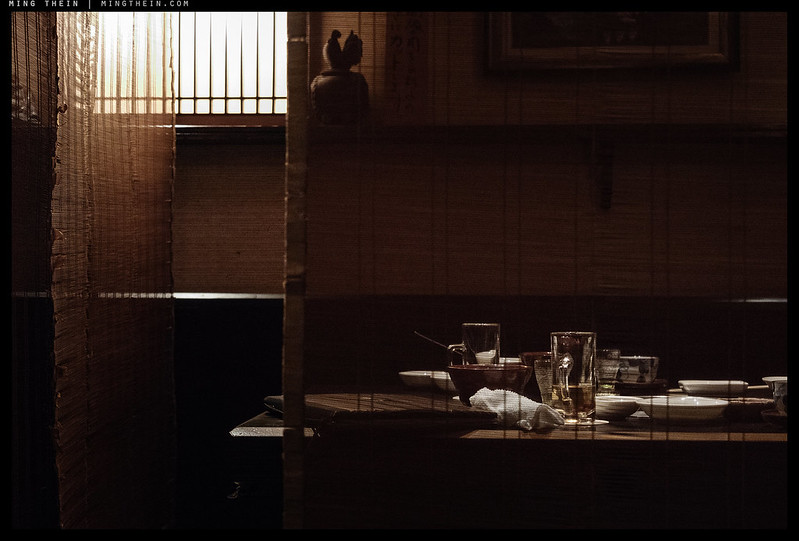
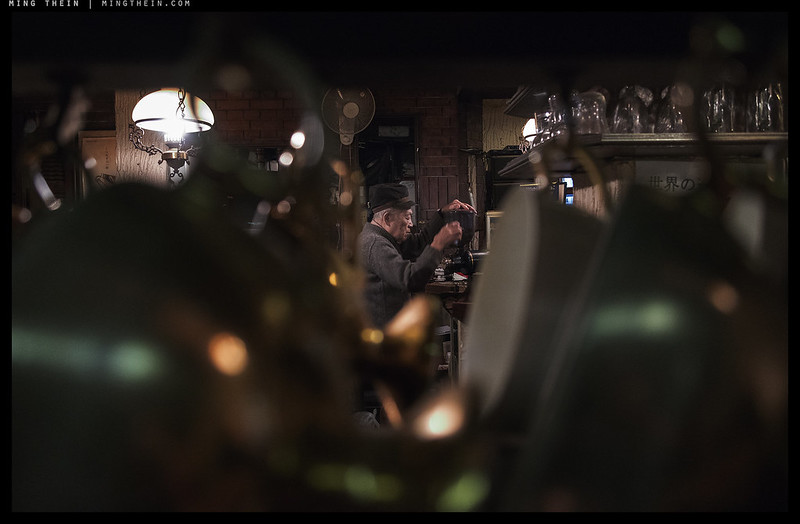

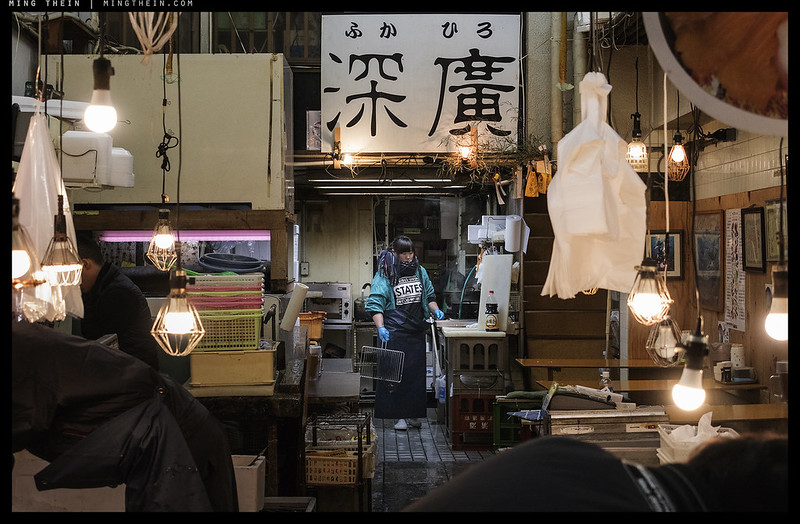

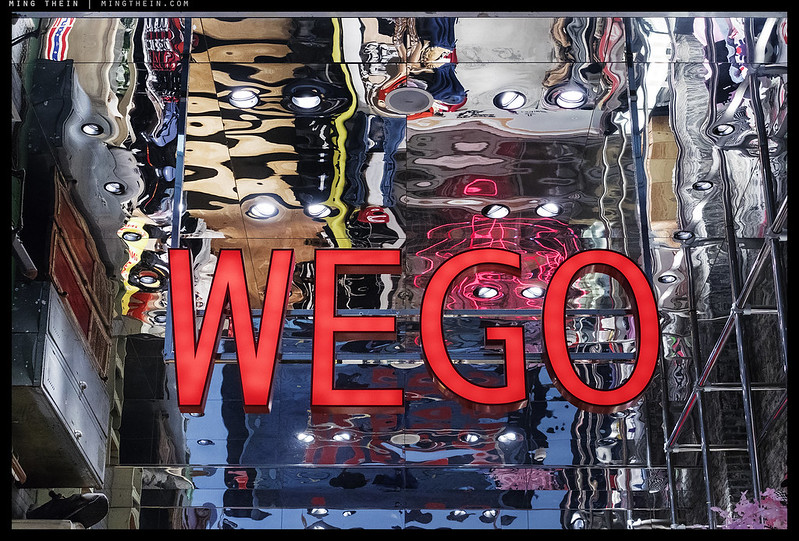
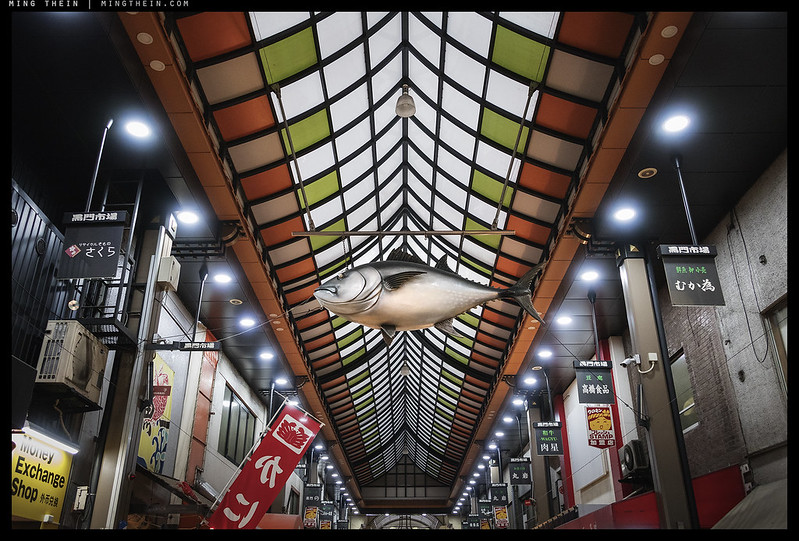
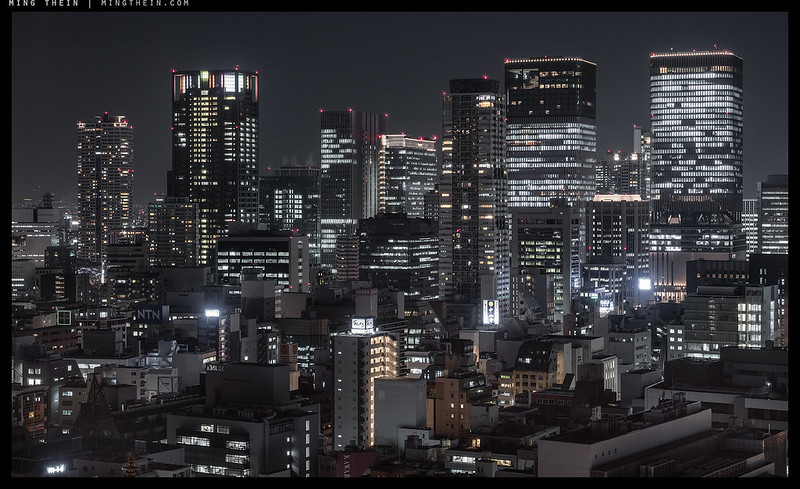





Interesting camera, and an interesting review. As a former owner and user of not only the 1st generation Ricoh GR but also a Nikon Coolpix A and even (albeit briefly) an X70, I must say there is one thing about this camera that both intrigues me and appeals to me: the EVF. With the GR, the A and the X70, there were a number of instances when I craved the luxury of being able to not only compose but also do fine focusing through a decent EVF. The nifty little snap-in-the-hot-shoe 28mm analog viewfinders (which I used for both the GR and the Coolpix) were fun but never truly satisfying. Plus, then, there were a handful of occasions (usually low-light and slower shutter speeds) where the ability to semi-immobilize the camera against my cheek with the EVF to my eye, might have saved a shot. Admittedly the G1x doesn’t have the kind of special prime glass which Ricoh and Nikon engineers magically mated to those cameras – but the EVF, for me at least, semi makes up for that.
And, yeah, obviously it ain’t as pocketable as the GR or quite as small as the Coolpix, but it’s not all that large either — in fact I think it’s closer to the dimensions of an ancient Lumix that still sits on my shelf (now converted to infrared) the GX1 – which means it’s pocketable-in-a-jacket-pocket kind of way – which isn’t a bad thing. And Canon optical engineers know a thing or two about glass, to wit their oh-so-cool-and-diminutive 22mm pancake lens for the M series which for my money optically rivals the aforementioned GR and A and beats the X70. If they had – or have – managed to squeeze enough magic into the present zoom lens, then perhaps this camera might even be a worthy successor to my late, lamented LX7, the Lumix cousin to the D-Lux 6 you once had. Faster glass would be nice, obviously … but though this impulse buy didn’t work for you, it may be the answer to some of my long-simmering hopes.
Nice review, by the way – and ‘nice’ is a massive understatement.
I thought the same a you – the EVF would be useful for precision and stability; but having tried other EVF-equipped cameras of similar size like the Sony RX100 series, I find they’re really too cramped – it doesn’t work as you’d expect/like. The extra size on the G1X3 helps, though it would be nice if the finder was all the way to one side to give your right hand more room – the GX85 and PEN-F do quite well here.
And that’s the catch: it’s about the same packing volume as a PEN-F and the ultra compact 12-32 Panasonic zoom, minus the flexibility. And at a recent offer price in my part of the world, the two cameras were about the same price. You can guess where I went in the end…it may work for you, too.
Well, you know what they say? “Different strokes for different folks” – and I went ahead and acquired a very lightly used G1x3 which, so far in my limited initial use, actually seems to be proving to be the long-awaited replacement for a series of compact cameras (the LX7, the GR, the Coolpix A and Fuji’s X70) which I’ve owned and shot with but which never quite ticked all of my own (admittedly eclectic) personal boxes and photographic needs. I’m surprised at both the compact size (definitely coat-jacket-pocketable) and the usability of the EVF (with its native 3:2 format it seems significantly larger than the compromised 16:9 EVF which Panasonic stuck in some of my favorite mu4/3’s cameras of recent years) and, in my initial shooting, the lens wide open is yielding beautiful images. People talk vaguely about ‘Canon colors’ which never quite made sense to me (most of my shooting is RAW and processed) but on the other hand, a previous small Canon I used to own, the original EOS M mated with the tiny but optically superb 22mm pancake, seemed to yield (or produce) a similar pleasing overall palette. Focusing speed is stupidly fast and processing speed not so much, but that doesn’t bother me. Possibly, also, the biggest subjective factor is my fondness for the wide (24mm FOV) angle: back in the analog days when I used to shoot extensively with small Pentaxes and a 24mm Takumar, I got to be a fan of that wide field and it seems to offer some visual possibilities that go beyond the admittedly wide 28mm view of the GR and the Coolpix A. But first and foremost, I do think (and this is totally subjective and unsubstantiated) that, somehow, the Canon optical engineers have done a lot of things right when designing and mating this lens to the sensor.
I think it may be a keeper for me.
Absolutely, which is why we have choices 🙂 I may well have had a dud – my lens wasn’t great at all; it wasn’t obviously defective (decentered/ soft etc) but just lacked some bite, which I’ll chalk up to the coverage area, diminutive physical size and limitations of optics/design/mechanics.
I think what Canon was going for with the G1X iii is to fill in a niche yet to have been met, and they did so with an entry in history as the first APS-C compact P&S w/ zoom. Had they gone with a fixed fast prime, they would not have met the goal as there are already cameras on the market such as the X100F & GRii, as well as the better performing RX1Rs & Leica Q.
When I first received this camera I initially wanted to return it due to the little quirks as a result of engineering compromises. However, as I spent more and more time with it, I found the G1X iii’s flexibility and friendly UX (compared to Sony & Panasonic) to be a delight. It turns out for almost all of the compromises which troubled me there are solutions and workarounds available. Case in point, in regard to the slow zoom operation, setting the lens ring function to “Step Zoom” will get me from wide to tele in a pinch, perhaps even too sensitively fast! Overall, the AF speed & accuracy in its miniaturized DSLR form factor led me to keep this camera. I’m also quite happy with the 1080P60 video quality, certainly bringing much casual yet confident joy in daily use!
“What it really is, is the best deliberate camera for those on a severe weight diet; what I think would really change the game is the same everything except for a fast stabilized fixed prime – say a 28/2 equivalent – and please, with a retracting lens cover…MT”
So basically, an updated GR.
It could also have another focal length, and the GR is viewfinder-less to maintain that profile, but sure – I’ll take one of those too!
I really like the compactness and versatility of the Olympus OM-D EM-10. If I want to go really compact I just fit it with the 14-42mm EZ pancake zoom or one of the f/1.8 17mm or 45mm primes. OK, that’s not really pockatable (although it will fit in a jacket pocket), but it fits in a really small camera bag that can be carried inconspicuously at my side.
This is the only camera I have returned. The specs were in the range I wanted however I found the ergonomics a little awkward and the lens just not in the same class as my GRII. I would love to see this camera with a stabilized L-quality 50/f2 equivalent lens. I don’t mind the increase in size and weight.
I agree; it would have been much better with a fast prime…basically, a sort of modern GR.
Could this be a possible lens cap for the GX1 III ?
https://petapixel.com/2018/02/14/lenscapt-hinged-camera-lens-cap-youll-never-misplace/
It’s not the misplacing part, it’s the extra step of preparation in what is ostensibly meant to be fast…
Were you looking to replace the GX85?
Yes – more pocketable, perhaps with an envelope or range compromise, and hopefully more experimentation as a result. The GX85 is competent but really not particularly fun, and the colors – especially skin tones – are a bit of a disaster.
I’ve had the GX85 for a few months. I like but don’t love it. I DO love my Ricoh GR and have been thinking that I might be happier with something more flexible with an APSC-sized sensor (Fuji X-T20?). But I’m a beginner — I probably need to spend more time with the GX85 before making a change.
Or maybe not; your experiences pretty much mirror mine. I miss the GR, but it doesn’t make sense to buy a new one now. The GX85 is competent but not particularly inspiring or enjoyable. I think of it as the un-camera…
Hi Ming,
I own one as well and for me it has worked pretty well so far.
I put an UV filter on the lenses and just leave the lens cap off. Still I dont see why the g1xiii should be slower than the x1d to start up. The x1d also has a lens cap on.
I have had a Sony rx100 and also still have a g7xii. I prefer the reach of the g7xii over the g1xiii, but overall I believe I get better color and tonality with the g1xiii. Also I find the user interface of the g1xiii much better than both the Sony and the g7xii. First the included viewfinder, second more/bigger wheels, third weather sealing.
For my part I like it quite a bit. Of course its clear that it is not a shallow DOF camera. But thats ok for me.
Best, Tom
Not aiming for shallow DOF; in fact, usually the opposite (which is harder as the sensor gets larger, and there are things smaller sensors can do compositionally that larger sensors cannot). Pure startup time isn’t slower, and AF is much faster – but it’s the whole process to capture – unpocket, switch on, cap off, fiddle, shoot – that’s slower. If you had it around your neck and cap off it’d probably be okay, but that rather defeats the point of a pocket camera. 🙂
I think thats the price of a retractable lens/ compact size that it takes some time to come out. The GM1 has a nice manually retractable lens, so it seems to be possible as well.
For my part I dont feel much slowed down with the G1xIII. Also I just own 2 spare batteries, so I can leave the camera switched on between shots. I find the whole package of EVF, big sensor, fast AF and 24-70mm range in a weathersealed body with even good grip in the hand and some bigger wheels very impressive.
Yes, I like mine a lot too.
I’ve thrown away the lens cap, bought a decent filter – and for me, it ticks all the boxes for an unobtrusive, fast focusing, very portable camera with really exceptionally good image quality. And very well built, unlike the frail feeling I get with most smaller compacts. I would have bought the G7X happily though if the internet wasn’t full of reports about dust easily getting into and behind the lens. In 2018 this is unacceptable, so weather and dust-proofing were important to me.
I do, however, understand the limitations that Ming found and I admire that he is sufficiently objective to be able to highlight the many strengths of this little camera while at the same time saying it wasn’t the right fit for him personally. I will certainly be keeping mine.
It’s so hideously ugly, they should hire you (or me!) to do the industrial design.
I think my two year old might also be a candidate. 😛
Scroll down to Ashley Gilbertson’s bag here. Apparently his 5-year old decorated his X-T2 for him! 🙂
View at Medium.com
Yeah, it looks like a consumer SLR from the early 90s (e.g., Canon EF-M). Not a good thing.
In reality, it’s much, much better than you would think. At least it’s modern industrial purposeful design and not a fake-looking retro throwback which seems to be the current hipster trend in cameras (and watches, sadly – my other consumer weakness)
Hello Ming, why on compact zoom cameras lens zoom is motorized? Does a manual turn-to-zoom require more size, or higher production costs / tecnical difficulties?
Probably because of the level of precision required to move the elements within zoom positions; real focal length changes are very short, which means either you need very high precision cams, or it would be easy to apply too much torque and damage the barrels. (my guess…)
The Fuji X30 has a proper physical zoom. Probably the best compact camera ergonomically I’ve used.
I used its predecessor and agree it was a pretty good arrangement – but it wasn’t pocketable, and the sensor was very small for the body size…
Yes, my old X20 had a similar design with the mechanical zoom extend. It was much quicker and more tactile than a motorized zoom, and allowed you to set zoom settings by looking at the barrel. That plus the build quality made for a pretty lovely compact experience.
I wish Fuji would revive that body style and toss a decent 1” sensor in there. They’d have my money…
For street shooting, power up time, as you pointed out, is essential. Is there any digital as fast as good old analog mirrorless? You just press the shutter release, fraction of second.
Any Nikon DSLR. If you have your finger on the shutter and turn the power switch, it’ll fire as soon as the switch is in position.
As to power-up time on GR, mine is ready in something like second and half.
I know. I think I should just have bought another GR. 😞 Except at this point it’s a five year old camera with a five year old sensor, and it’s starting to show, too.
Rejoice Ming. Just today, a rumour (yes, I guess you’re not into these, but please bear with it) has surfaced about a possible GR III for September. Meaning there could be an announcement at the Kina 2018.
Actually, I am. I’ve owned about five or six of various vintages over the years. I was going to buy another one, but the age of it (and pricing remaining at original levels) didn’t make much sense. So a new one would be most welcome indeed…
The opposite – I’ve owned five or six of these in various incarnations over the years, and always found them useful as the pocketable but serious tool – there isn’t really anything else in the same category.
TCSTV confirmed your suspicion in their review of the G1X III; that the G7X II is a more sensible buy because of the faster and longer lens, making it, as you said, a wash between the two.
Not really: the G7X II is a lot cheaper…
We really need an updated GR. I don’t know if they can make the lens faster without greatly increasing its size or responsiveness, but I would think they could improve the sensor, which hasn’t really been great at anything near ISO 1600, and the image processing in it. Putting something like the D500’s sensor in a GR II, and leaving the rest alone would be good enough for me.
I’d settle for a better sensor, too. IS would be nice, but I don’t see where it would physically fit.
I hope they’ll weather and dust seal it too.
I found it great but portraits were too sharp, skin tones to wrinkly. I like Fuji skin tones better.